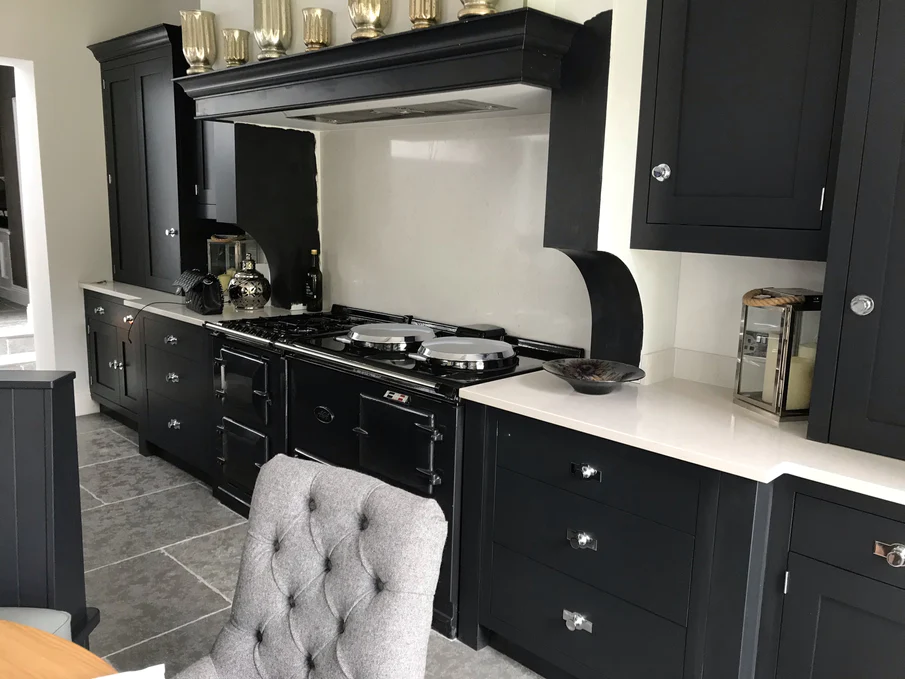
Does an Aga Cooker Need Electricity?
You might think that only electric Aga models require electricity to power them but, in reality, most Aga models, including traditional gas and oil models, also require electricity to work. In this article, we detail the electricity required to power a number of different Aga cooker models, and how Aga cookers work.
So, does an Aga cooker need electricity? Most Aga cookers require some degree of electricity to power them, typically a 13amp socket, or a 32amp cooker circuit. In some cases, electricity is required to create a spark, and in others to completely power all elements of the oven.
Read on to learn more about the electricity supply required to power Aga cookers.
DO AGA COOKERS NEED ELECTRICITY?
Regardless of their main fuel source, most Aga cookers need at least a small amount of electricity. Some will require just a 13amp socket, whilst others may require a 32amp “cooker circuit”. Some Aga cookers may require multiple sockets, whilst others can require both sockets and “cooker circuits”.
Below is a detailed list of the electricity supply required for a number of Aga cooker models.
| Fuel/Model | Electricity Supply Required |
| Gas Conventional Flue Aga (excluding Dual Control) | Non-AIMS & Module: None required
With Module: 32 amp cooker circuit |
| Gas Powered Flue Aga (excluding Dual Control) | No Module: 13amp switched socket
With Module: 13amp switched socket and 32amp cooker circuit. Integral socket required |
| Electric 13amp Aga | No Module: 13amp switch fused spur point, recommended to be on its own 16amp circuit breaker
With Module: Additional 32amp cooker circuit |
| Aga 7 Series R7 (Dual Control) | No Module: 32amp cooker circuit (+13amp socket for 5 oven models)
With Module: X2 32amp cooker circuits (+13amp socket for 5 oven models) |
| Aga R3 Series Cookers | R3 100-4h (Twin Hotplate): X2 13amp switched, fused spur connection units
R3 100-4i (Hotplate Plus Induction): X2 13amp switched, fused spur connection units |
| Aga eR3 Series Cookers | eR3 100-3, 100-4 and 110-4
(Non-Induction): 32amp cooker circuit eR3 100-3i, 100-4i and 110i (With Induction): 32 amp cooker circuit, plus 13 amp socket outlet eR3 150-4, 160-5 and 170-5 (Non-Induction): 32 amp cooker circuit, plus 13 amp socket outlet eR3 150-4i, 160-5i and 170-5i (With Induction): 32 amp cooker circuit, plus X2 13 amp socket outlet |
| Aga 60 (All-Electric or Dual Fuel Model) | 32amp cooker circuit |
| Oil Fired Aga | No Module: 13 amp socket (socket outlet for 4 oven models)
With Module: 13amp socket, plus 32amp cooker circuit using an integral socket |
| Induction Hob for Five oven Dual/Total Control Aga | Induction Hob (5 Oven 7 Series [Dual/Total Control] Only): N/A (5 oven models fed from existing warming cupboard socket) |
HOW DO AGA COOKERS WORK?
In most Aga models, electricity is required tocreate a spark, at minimum, or in electric and dual fuel models, to create heat.
Oil and gas Aga cookers work by generating heat from a single burner, controlled by a thermostat. This then regulates fuel distribution to the various ovens and hotplates, maintaining a set temperature. The cast iron body of Aga cookers enables easy heat absorption, storage, and transmission by way of radiant heat.
Newer, Total Control Aga models work similarly, except that they have the ability to control which area of the oven should be heated, and that the various areas are heated by elements embedded within, rather than from a single burner. Dual Control models also have this feature, but heat comes from a single burner. These features also offer users the ability to easily turn the cooker on and off to suit your needs.
Learn more about how Aga cookers work in our recent blog.
BENEFITS OF AN ELECTRIC AGA COOKER
Since electricity is required for most Aga models, you may now be wondering if it’s worth buying an electric model over a more traditional model. Here are a few benefits of electric Agas to help you make a decision:
- Reduced service calls and costs
- Greener option
- More flexible positioning in the home
- Additional slow cooking oven in some models
- Easier to control, operating like a conventional oven
RECONDITIONED AGA COOKERS AT RANGE EXCHANGE
After learning more about the electrical supply required to power Aga cookers, you’re interested in owning your own Aga, Range Exchange offers a wide variety of reconditioned Aga cookers, restored to showroom condition.
Whether you’re interested in a traditional gas or oil powered Aga, or you’d prefer a modern electric model, we have something for everyone. We also have dual fuel models which offer the best of both worlds.
Take a look at our range of reconditioned Aga cookers online today, or get in touch with our friendly team to discuss your specific requirements.
